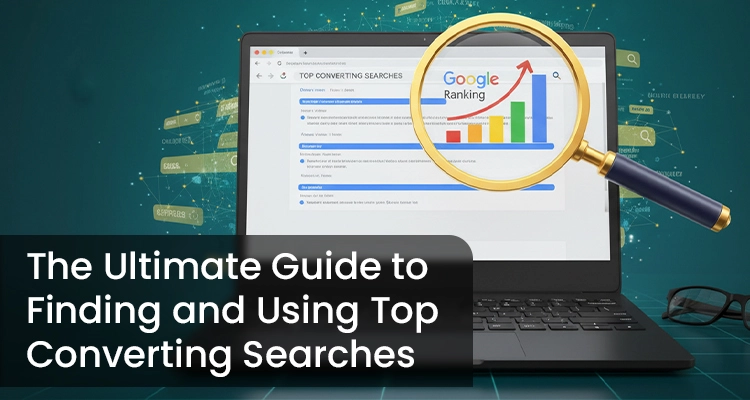Why Accessibility Matters in Web Design: Creating Inclusive Experiences

In the evolving digital world, web accessibility is no longer just a consideration; it’s a necessity. As the internet becomes increasingly central to our daily lives, it’s crucial that everyone, including those with disabilities, can access websites and interact with their content. This principle is at the heart of web design, where accessibility plays a fundamental role in fostering an inclusive digital experience. In this article, we’ll delve into why accessibility matters in web design, its benefits, and how businesses can create more inclusive digital experiences for users of all abilities.
What is Web Accessibility?
Web accessibility refers to the practice of designing websites, tools, and technologies that are accessible to people with disabilities. According to the World Wide Web Consortium (W3C), accessibility is about ensuring that all users—regardless of their physical or cognitive abilities—can access and interact with web content, such as text, images, and videos.
The Web Content Accessibility Guidelines (WCAG) provide standards and recommendations that web developers and designers must follow to make websites accessible. These guidelines are built around four core principles: perceivable, operable, understandable, and robust (POUR).
Why Accessibility Matters in Web Design?
- Ethical Responsibility and Inclusivity
First and foremost, creating accessible websites is a social responsibility. With over a billion people worldwide living with some form of disability, web accessibility ensures that these individuals have equal access to the web. By making web content accessible, businesses show that they care about inclusivity and equality, thus building trust with a broader audience.
- Legal Requirements
In many regions, accessibility is not just a good practice; it’s the law. Countries like the United States, Canada, and the European Union have legislation in place that mandates web accessibility. For example, in the U.S., the Americans with Disabilities Act (ADA) requires websites to be accessible to people with disabilities. Failure to comply with these laws can lead to lawsuits, penalties, and damage to your brand reputation. Therefore, web accessibility is essential for both ethical and legal compliance.
- Wider Audience Reach
An accessible website attracts a wider audience. It’s estimated that around 15% of the global population lives with a disability. By ensuring your website is accessible, you are not only catering to a diverse demographic but also broadening your market reach. Accessible websites can lead to increased traffic, higher customer retention, and improved brand loyalty.
- Improved User Experience
Accessibility enhances the overall user experience (UX) for all users, not just those with disabilities. Features such as easy-to-read fonts, keyboard navigation, and well-structured content benefit everyone. Websites with clear and simple navigation, descriptive headings, and alternative text for images provide a smoother and more intuitive user experience. Ultimately, designing for accessibility makes your site more user-friendly and increases engagement.
Key Benefits of Web Accessibility
- Boosts SEO and Search Engine Ranking
Search engines, such as Google, prioritize accessible websites in search rankings. Why? Because accessible websites tend to have better structure, cleaner code, and better usability, which aligns with Google’s SEO algorithms. By making your site accessible, you’re simultaneously improving its SEO performance.
- Enhances Brand Reputation
As more businesses recognize the importance of inclusivity, those that take accessibility seriously differentiate themselves from competitors. Consumers are increasingly favoring companies that prioritize diversity and inclusion, and accessible web design plays a crucial role in building a positive reputation.
- Increases Customer Satisfaction and Retention
When users find your website accessible, it enhances their overall experience. This leads to higher customer satisfaction, increased trust, and long-term loyalty. An accessible website provides an equitable and consistent experience for all users, which in turn results in repeat visits and improved customer retention.
- Supports Legal and Ethical Compliance
By adhering to accessibility guidelines, businesses can avoid potential legal complications and financial penalties. Complying with laws, such as the ADA and WCAG, helps ensure that your business remains on the right side of the law while contributing to a more inclusive society.
Best Practices for Creating Accessible Websites
Creating an accessible website involves several key practices that can be integrated into your design and development processes. Here are some essential tips to follow:
Use Semantic HTML and Proper Markup
Structured HTML is a key element of accessible web design. Use semantic HTML tags such as headings, lists, paragraphs, and tables to structure your content logically. This helps screen readers interpret and present the content in a more understandable manner.
For example, using
<h1> the main heading,
<h2> subheadings, and
<p> paragraphs makes it easier for users to navigate.
Provide Text Alternatives for Images
Images should have descriptive alt text, allowing visually impaired users to understand the content they depict. Alt text should be concise yet descriptive and should convey the same meaning as the image itself. For example, an image of a product should include alt text like “Red running shoes with white soles and blue accents.”
Ensure Keyboard Navigation
Some users may not be able to use a mouse and rely on keyboard navigation instead. Ensure that all interactive elements, such as forms, buttons, and links, are accessible using the keyboard. Use the tabindex attribute to enable easy navigation between elements, and ensure the focus indicator is visible at all times.
Use Color Contrast Wisely
Ensure that text and background colors have sufficient contrast to improve readability for users with visual impairments. Tools like the WebAIM Color Contrast Checker can help you assess the contrast ratio and ensure that your website meets WCAG guidelines.
Create Clear and Consistent Layouts
Maintain consistency in layout and navigation across the entire website. This makes it easier for users to navigate and find information. Group similar items together, use clear headings, and keep the design simple and uncluttered.
Use ARIA (Accessible Rich Internet Applications) Markup
ARIA is a set of attributes that can be added to HTML elements to improve accessibility, especially for dynamic content and complex user interfaces. ARIA roles, states, and properties help assistive technologies understand the functionality of various elements, such as sliders, tabs, and accordions.
Provide Captions and Transcripts for Multimedia
Videos, audio files, and animations should have text captions or transcripts available. This helps users with hearing impairments understand the content. If possible, include sign language interpretation for videos to provide an inclusive experience.
Test for Accessibility Regularly
Regularly test your website’s accessibility using tools such as WAVE, Axe, or Lighthouse. Conduct usability testing with real users, including people with disabilities, to identify areas for improvement.
The Future of Web Accessibility
As technology continues to advance, the focus on web accessibility will likely grow even stronger. With the rise of artificial intelligence (AI), machine learning, and augmented reality (AR), developers will need to consider how these technologies can enhance the accessibility of their websites.
Moreover, as digital regulations evolve, accessibility matters in web design will become a more critical aspect. Keeping up with the latest accessibility guidelines and integrating them into your design and development processes will ensure that your website remains compliant and user-friendly for all.
Conclusion
Accessibility matters in web design is not just about meeting legal requirements; it’s about creating a positive and inclusive user experience for all. By designing websites that are accessible to people with disabilities, you not only provide equal access to digital content but also enhance your website’s SEO, boost brand reputation, and increase customer satisfaction.
As we continue to move towards a more digital-first world, accessibility should be a central consideration in every web design project. Businesses that embrace accessibility will create stronger connections with their customers, foster a more inclusive society, and stay ahead of the curve in a competitive market.
Content written by-Gunjan
Gunjan is part of the expert content marketing team at ITCombine. She has an expertise of curating meaningful information that can be used by visitors in general. Gunjan is also involved in creating Client specific stories and blogs.
Copyright © 2025 - itcombine.com.
All Rights Reserved.








